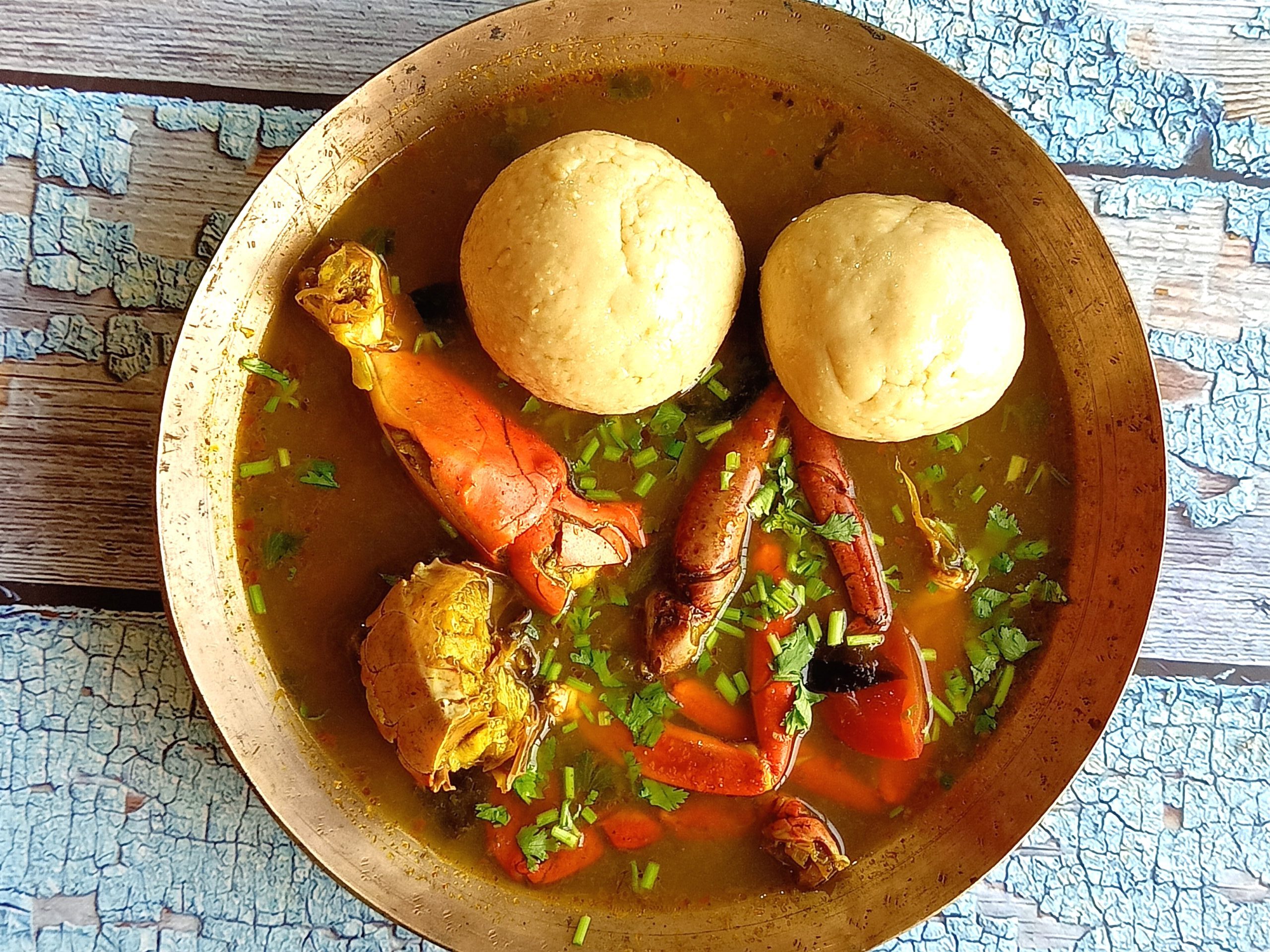
For the foxtail millet mudde
| Water | 4 cups, divided (set 1 cup aside) |
|---|---|
| Foxtail millet flour | 2 cups, divided (set 3 tablespoons aside) |
| Salt | to taste |
| Ghee | 2 teaspoons |
For the nandu (crab) rasam
| Shallots | 10-12 |
|---|---|
| Ginger (chopped) | 1 teaspoon |
| Garlic cloves | 12-14 |
| Cumin seeds | 1 ½ teaspoons |
| Black peppercorns (whole) | 2 ½ teaspoons |
| Coriander seeds | 1 ½ teaspoons |
| Fennel seeds | 1 teaspoon |
| Tomato (medium) | 1 |
| Green chillies (medium) | 2-3 |
| Curry leaves | 15-20 |
| Coriander leaves | ½ cup |
| Tamarind | 3 tablespoons (adjust for sourness) |
| Crabs (large, halved, with legs separated) | 2 |
| Coconut oil | 2 tablespoons |
| Mustard seeds | ½ teaspoon |
| Dried red chillies (whole) | 3 |
| Asafoetida | 2 pinches |
| Turmeric powder | ½ teaspoon |
| Tomato (medium, sliced) | 1 |
| Black pepper powder (freshly ground) | 1 ½ teaspoons |
| Salt | to taste |
What You Will Need
Two large pans with lids, a small pan, mixing bowls, measuring cups, a wooden spoon or spatula, spoons, a dish.
Instructions
For the foxtail mudde:
Place a pot on the stovetop, and heat three cups of water on a medium-high flame.
Meanwhile, pour the remaining cup of water into a mixing bowl and add three tablespoons of foxtail millet flour to it. Stir until no lumps remain.
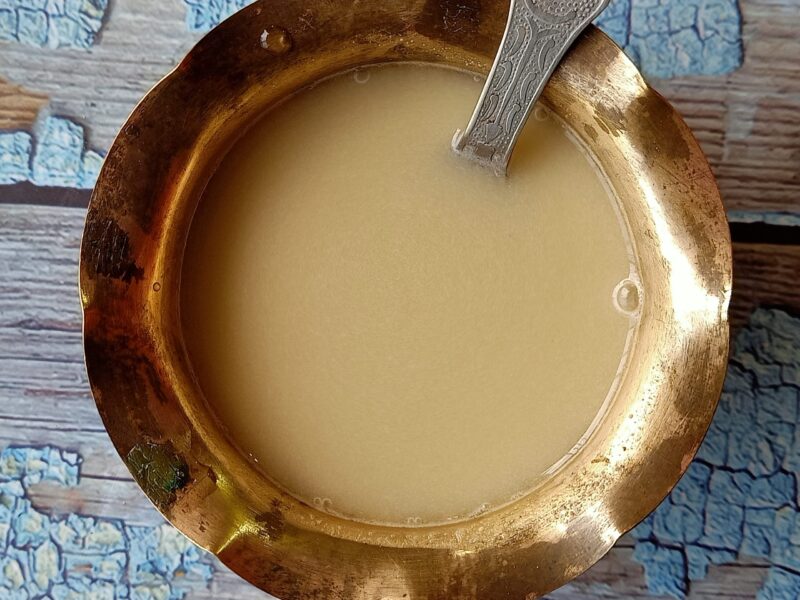
Slowly pour the mixture into the hot water on the stovetop, stirring continuously.
Add salt to taste and let the mixture come to a boil.
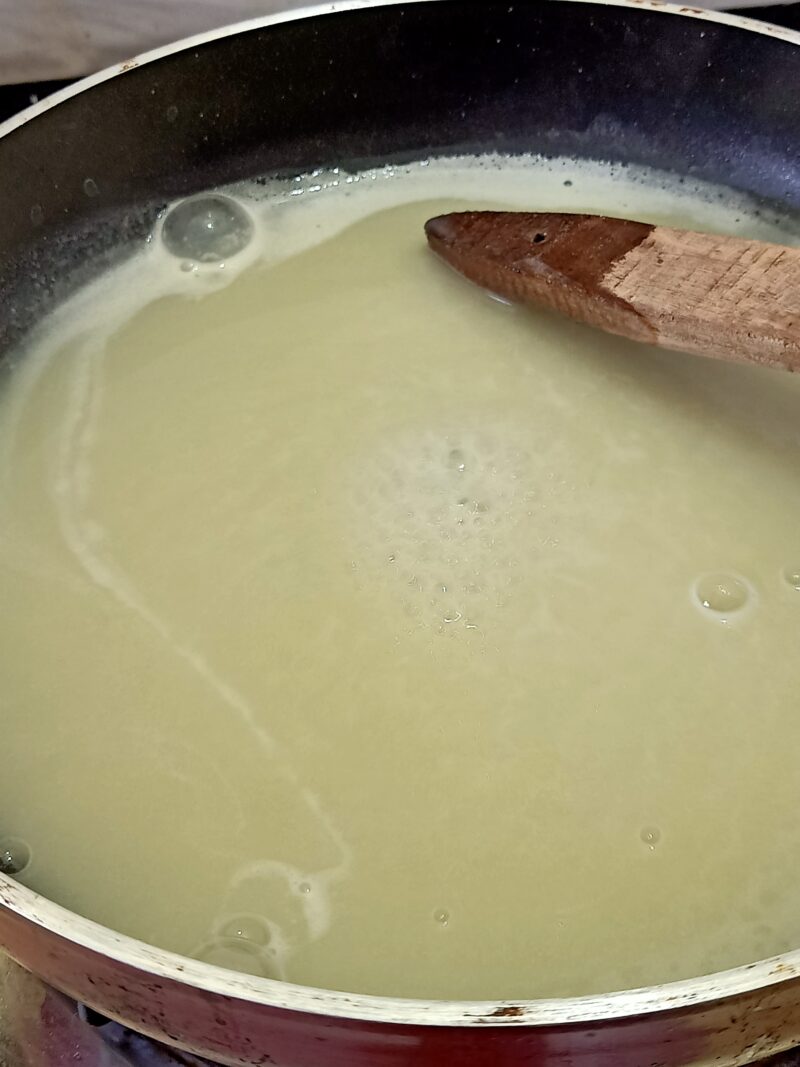
Add the remaining foxtail millet flour to the boiling mixture, then turn the heat to low.
Keep stirring the mixture with the back of a wooden spoon or a spatula, until it coagulates and forms a sticky dough.
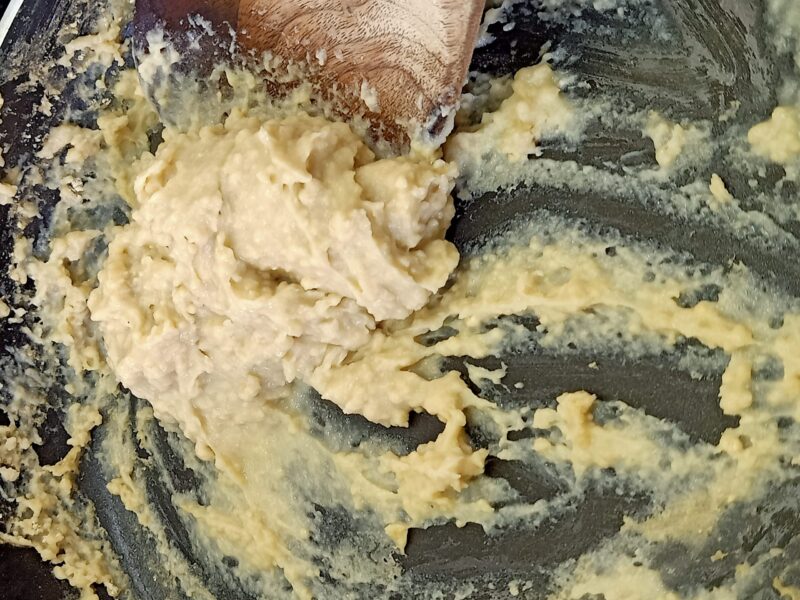
Cover the pot with a lid, and let the mixture cook for about four minutes on low heat.
Turn off the stove, and allow the pot to sit, covered, for another four or five minutes.
Remove the lid and mix the dough well, then transfer immediately onto a dish while the dough is still hot.
Add two teaspoons of ghee to the dough and knead it well.
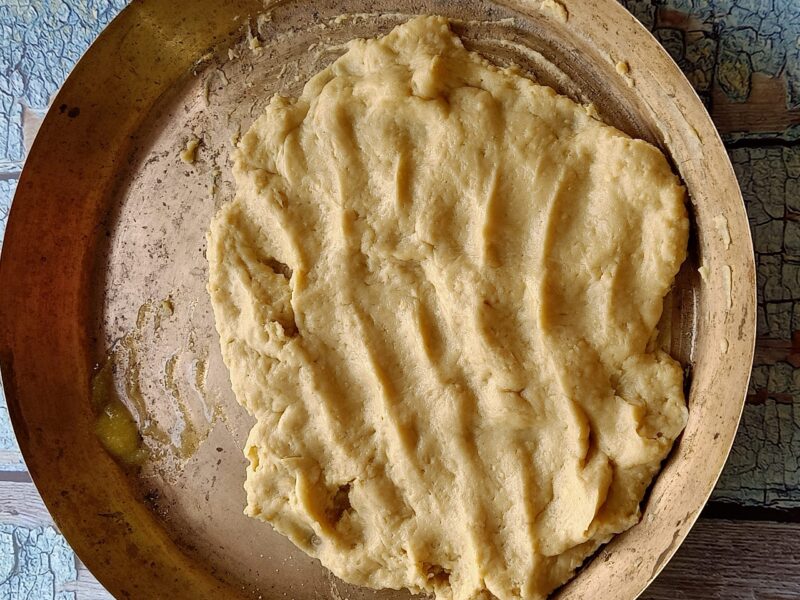
Grease your palms with some ghee so that the dough does not stick to them while forming the mudde.
Roll the mudde, like shaping laddoos, while the dough is still warm, and set aside.
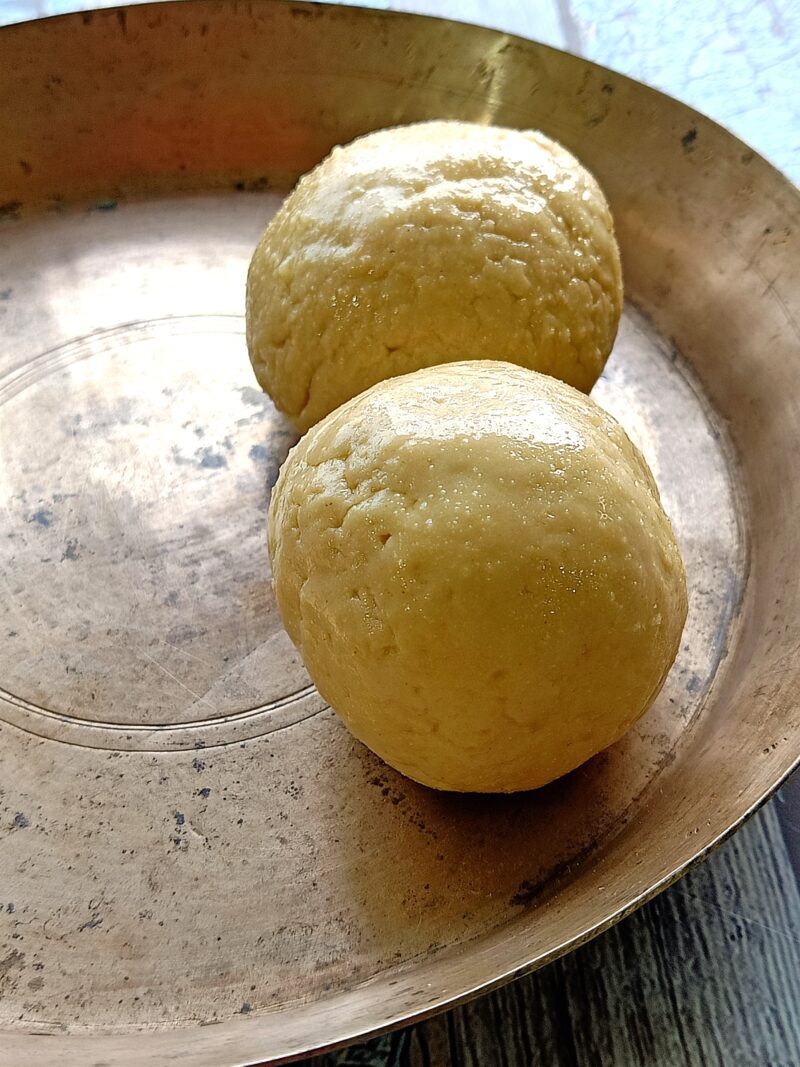
For the nandu (crab) rasam:
Add the shallots, ginger, garlic, whole dry spices (except the mustard seeds and asafoetida), one tomato, green chillies, 10-12 curry leaves, and two tablespoons of coriander leaves to the mixer grinder and grind to a paste. Set aside.
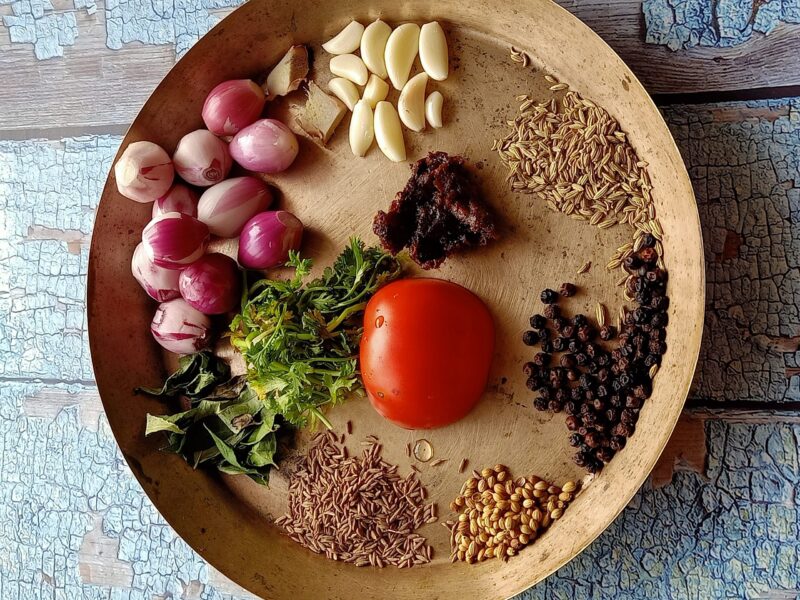
Boil half a cup of water in a small pot on the stovetop, then take it off the heat. Add the tamarind to the water and soak it for 10 minutes. Extract and sieve out the pulp, and discard the seeds. Set aside the pulp.
Wash and clean the crab pieces. Lightly crack the leg shells with a heavy weight. Set the crab aside.
Turn on the stovetop and heat coconut oil in a pan.
Temper whole mustard seeds, curry leaves, red chillies, and asafoetida in the hot oil.
Add the crab pieces to the oil and fry for three minutes on high heat.
Pour the ground paste to the pan, then add turmeric powder. Turn the heat to medium-high and sauté the mixture for seven to eight minutes.
Add the salt, tamarind pulp, sliced tomato slices and hot water to the pan. The quantity of water can vary depending on how you like the consistency of the rasam. Cover the pan with a lid, and cook the rasam on high heat for another seven to eight minutes.
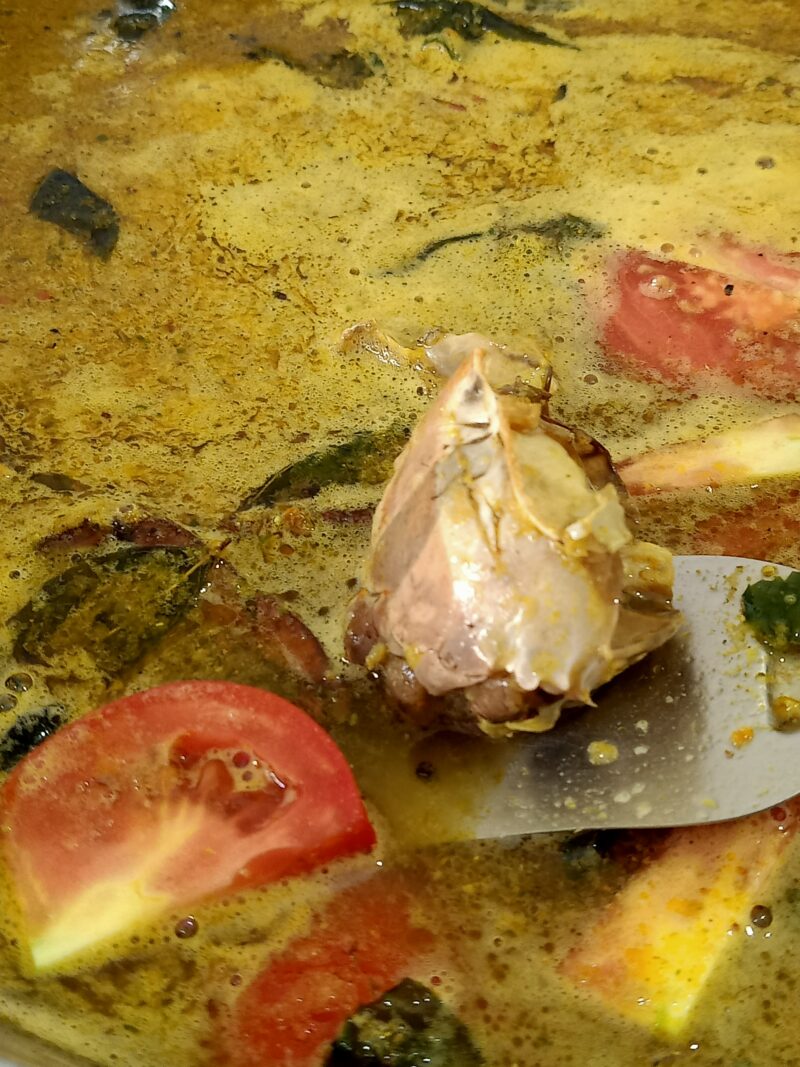
Turn off the stove. Sprinkle black pepper powder and coriander leaves over the rasam, then serve. The nandu rasam should taste peppery and tangy.
Tips
- Cover and steam the dough to cook it fully.
- Keep stirring the millet-and-water slurry continuously until the dough comes together.
Variations
Foxtail millet flour can be substituted with finger millet flour, which is how mudde is usually prepared.
Sayani Sengupta leads the Millet Revival Project Cooking lab. A home chef based out of Kolkata, she runs her own food brand, Gooseberri, for which she often writes recipes. Her recipes have also been featured in publications like The Times of India, Telegraph, Sananda, and Indulge Express.
You must be logged in to rate this recipe.

Sign in with email
